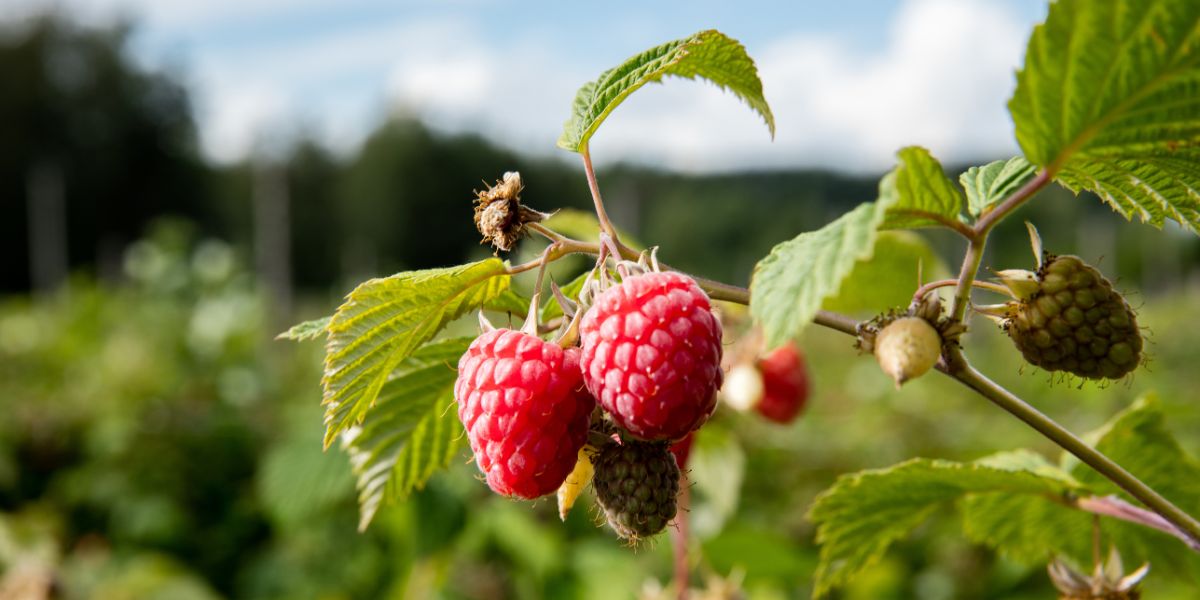Quick intro and interesting facts
- The raspberry is the edible fruit of a multitude of plant species in the genus Rubus of the rose family, most of which are in the subgenus Idaeobatus.
- A raspberry is actually not a true berry, but an aggregate fruit, developing from the numerous distinct carpels of a single flower. A true berry grows from a single ovary.
- What distinguishes the raspberry from its blackberry relatives is whether or not the torus (receptacle or stem) “picks with” the fruit. When picking a blackberry fruit, the torus stays with the fruit. With a raspberry, the torus remains on the plant, leaving a hollow core in the raspberry fruit.
- Primo-canes vs Flori-canes: Primo-canes are the first-year canes that grow every spring from the crown of the plant. These young, green shoots are fast-growing. Flori-canes, on the other hand, are the second-year canes. Once they go dormant in the winter of their first year, they typically take on a woody appearance, turning brown. They usually have fewer leaves than primo-canes since their only goal is to produce flowers and fruit.
- Berries For Africa grow and supply four different colors of raspberry plants (red, yellow, black and purple) with many different cultivars to best suit your climate, market and production system.
Tips for good, healthy soil
Raspberry plants can be grown in a wide range of soils, but prefer well-drained loam or sandy loam. The soil pH should be slightly acidic with optimum ranges between 5.7 and 6.8. Good quality compost can be worked into the top layer of the soil to increase the organic matter content and improve drainage, especially in clayey soils.
Raised beds approximately 25cm high would also be beneficial in heavy soils. Avoid plantations where tomatoes, potatoes, peppers or eggplants were planted in the past 5 years as they could host diseases such as Verticillium wilt.
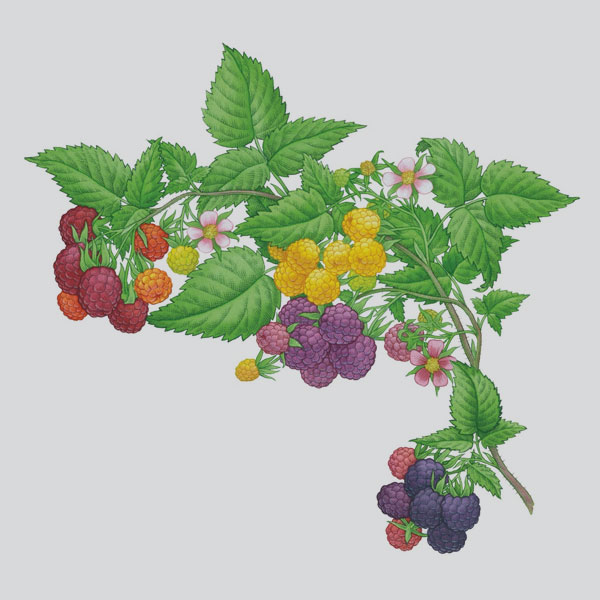
Good quality plants
Purchase disease-free plants from a reputable nursery. You will benefit from Berries For Africa which grows most of our plants from tissue culture and has the mother plants screened annually to make sure that they are free from viruses and diseases. Diseases can also be spread via various vectors, insects, wind and pathogens in the water and soil, but most can easily be treated with registered organic/biological or synthetic fungicides.
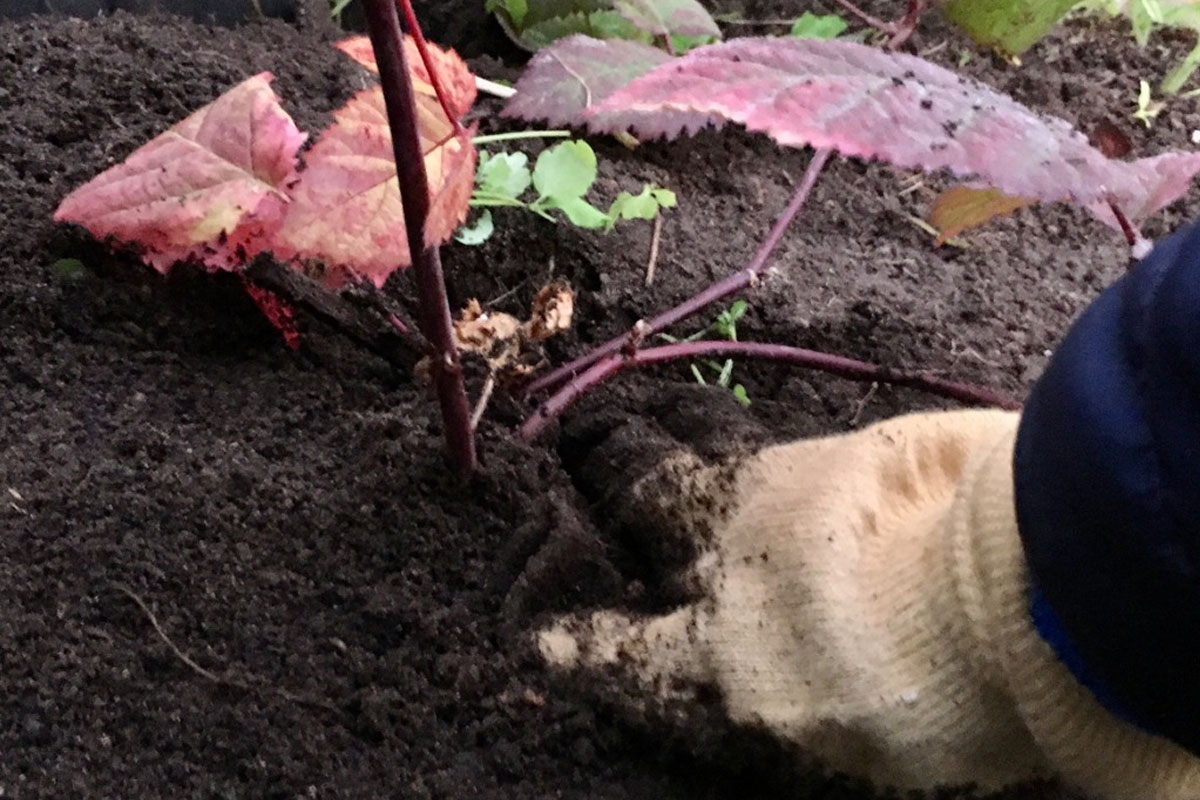
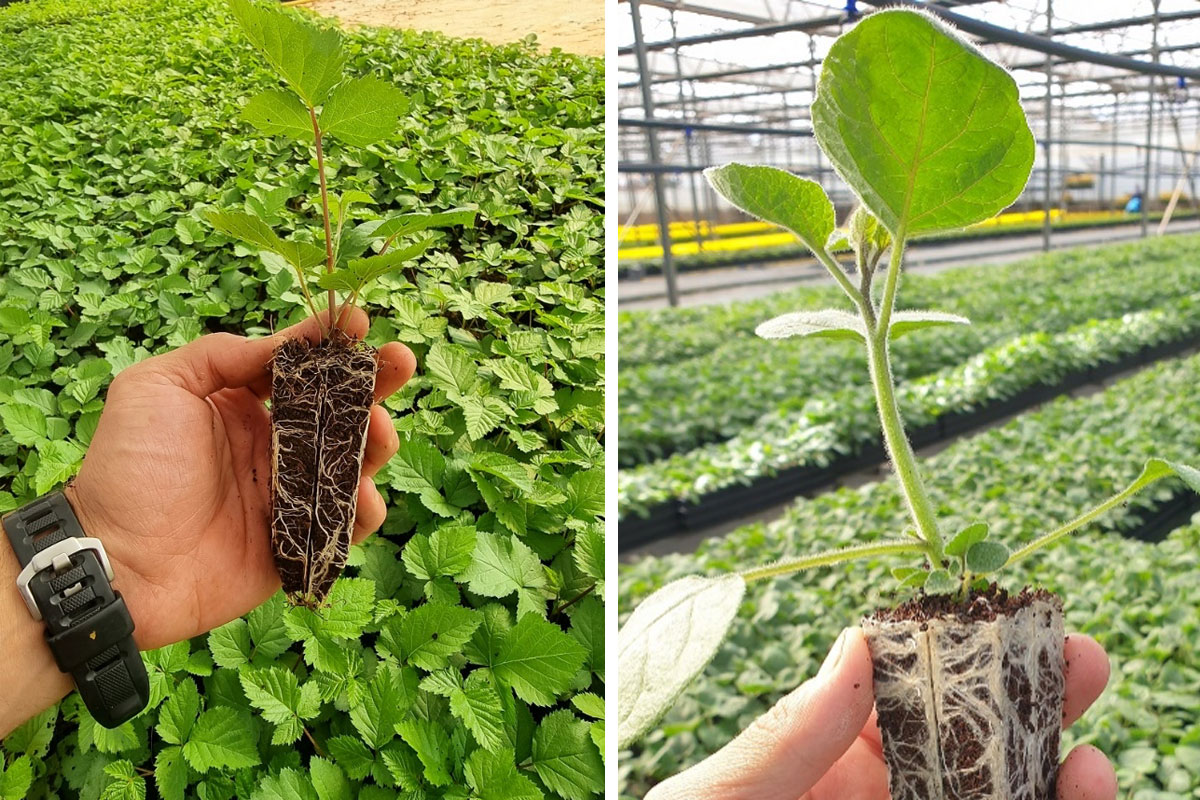
Fertilizers
Apply a balanced fertilizer such as a 10-10-10 formulation in the early spring when primo-canes start emerging through the soil and then again in early summer. We found that a product such as the Talborne Organics 2:3:2 works well during planting, followed by a 3:1:5 a few months later that contains higher amounts of potassium which the plant needs for better flowering and fruit set. Manure and compost can also be used which will promote healthy soil with plenty of organic matter which will also further promote the microbial life in the soil. Be careful of overfertilizing. Too much fertilizer, especially nitrogen, encourages vegetative growth instead of allowing the plant to produce fruit. Perennial plants have the ability to store nutrients from one season to the next. This results in the internal nutrient status of the plants sometimes being somewhat different than would be expected from one season’s soil test or fertilizer program. Because of this, virtually all authorities agree that large-scale producers should take annual leaf samples for nutrient analysis. Fertilizer programs can then be adjusted according to the results. For optimum plant growth and fruit production, it is recommended to have the soil and water tested followed by leaf sample tests during plant growth.

Irrigation
Compared to other fruit crops, raspberries do not need much water. When canes are first planted in the patch, water them well a couple of times per week, keeping the soil moist but avoiding waterlogging the roots. Younger, newly established plants require the most care to make sure that their roots do not dry out or get waterlogged. Once plants have established a good root system and are about 1m tall, the plants would require approximately 15- 20mm of water a week during summer, whether by rain or irrigation. This amount is dramatically lowered during the winter season when the plants are in their dormant phase. The amount of water needed per plant or plantation would depend on the soil type, rainfall and climate conditions. To minimize diseases, irrigation should preferably be applied to the roots. Most commercial farmers use dripline irrigation systems with a 300mm drip spacing to wet the whole row to prevent the leaves, canes and fruit from getting excessive water.

Location
Berry plants absolutely love the sun, but can also tolerate partial shade. Look for a sunny spot in the garden where they can receive at least 8 hours of full sun every day, and maybe even a little bit of afternoon shade. Protection from strong winds is beneficial too and will keep the plant’s leaves from being shredded.
They do best in the cooler parts of the country where the temperatures do not exceed 33˚C for many days in the summer. Some farmers use 20% shade net to prevent stress and sunburn on the leaves and fruit in these warmer areas. Most raspberry varieties are very cold hardy, so frost is not a problem at all.
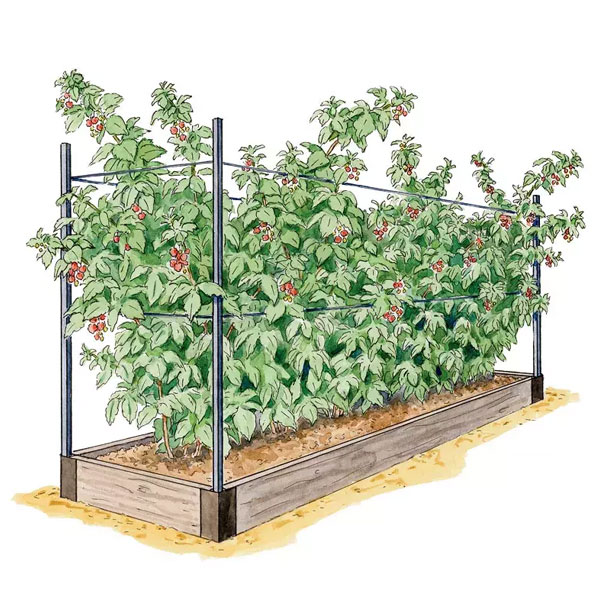
Pruning
Pruning raspberry plants is relatively easy. The dead or damaged canes should be pruned out to promote new growth and assist with wind and light penetration. Light penetration is key to produce fruit lower in the plant canopy providing higher yields and better fruit quality. The primo-canes that fruited can be tipped back just below the section of the last bearing fruit after the spring harvest which should promote new growth for an autumn harvest. The canes can then be cut back to the ground level after the autumn harvest. With the flori-cane, summer-bearing varieties, the canes can also be cut back short to the ground after harvest.
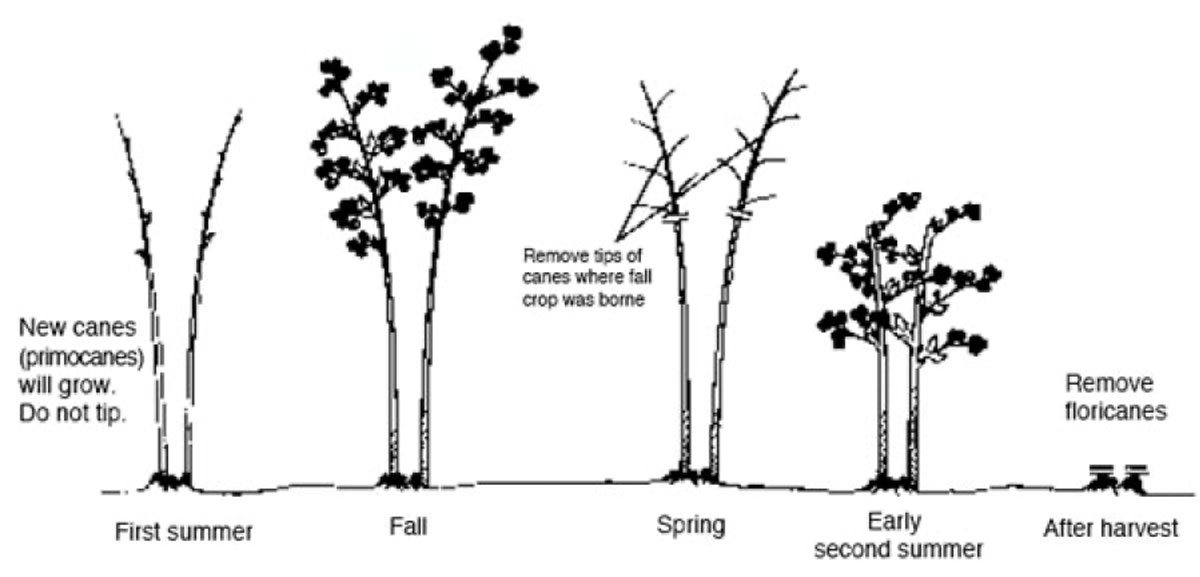
Trellising
Most raspberry varieties are self-supporting, but for optimum production and fruit quality, structural support via a trellis or wire fence must be used to keep canes from breaking when loaded with berries.
Usually, a simple single or twin-wire system is sufficient, but some berry producers use sophisticated systems to produce more than 15 tons of raspberries per hectare.
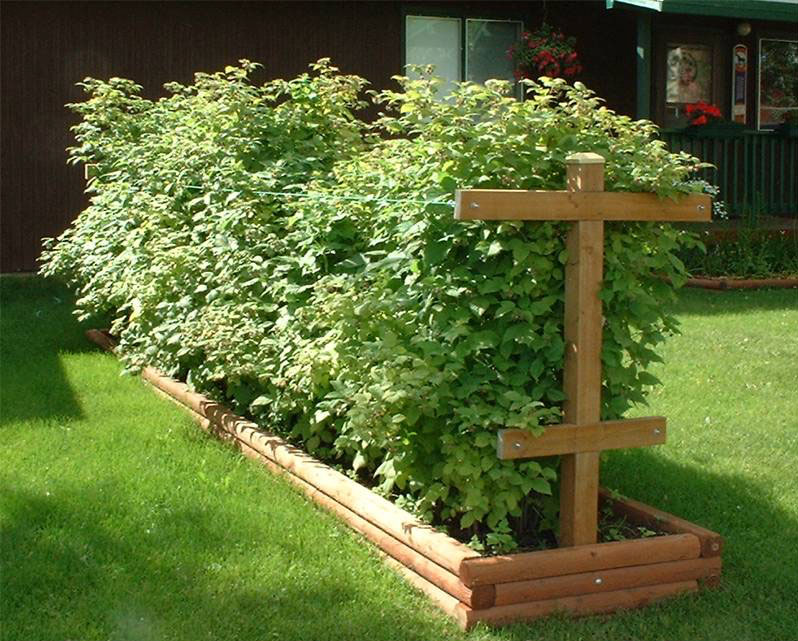
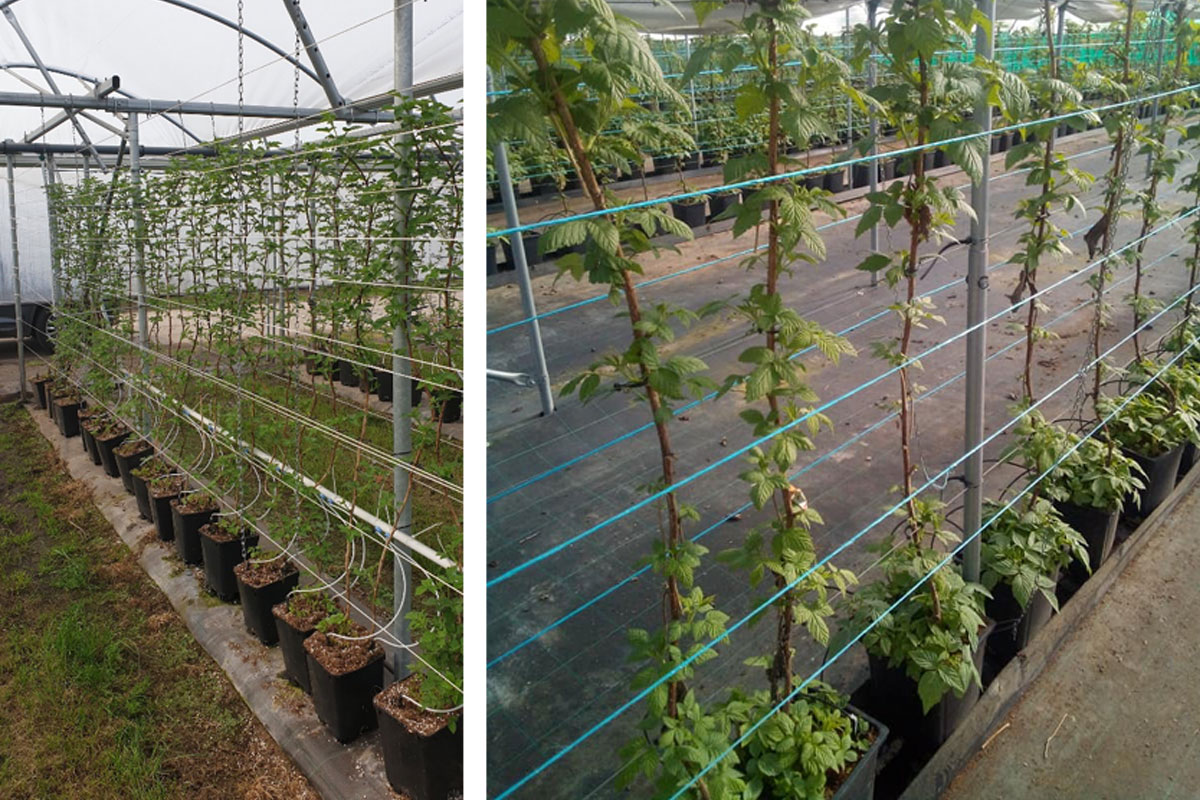
Disease management
Raspberries are susceptible to challenges with insects, as well as viral and fungal diseases. The best way to mitigate these challenges is to scout often and treat infestations or infections as soon as possible. Be watchful for aphids, Japanese beetles, spider mites, and cane borers.
Mildews can found, especially in climates with many rainy and cloudy conditions. A good solution is to plant more resistant varieties. Berries For Africa uses biological control such as beneficial fungi to control certain diseases as well as to introduce small predatory insects that prey on certain pests such as aphids, red spider mites, thrips and bollworm. Companies such as Real Integrated Pest Management, Koppert and Biobee can supply some of these solutions and have offices in South Africa and many other countries.
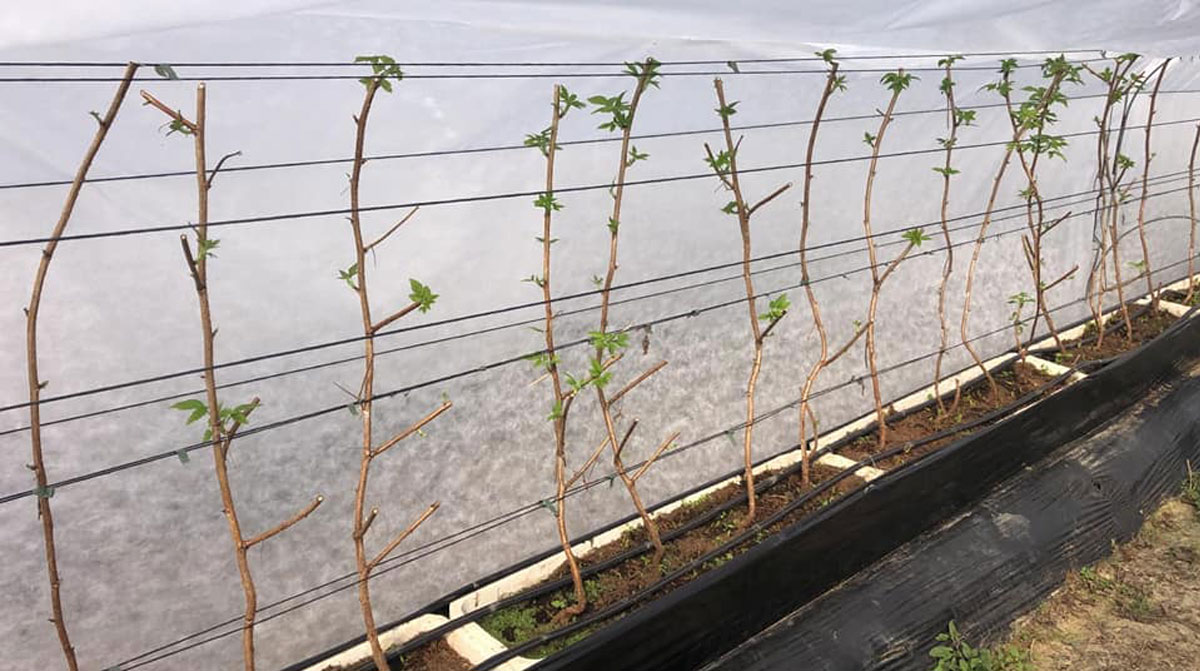
Berries For Africa grows and supplies more than 50 different berry cultivars and can provide advice on specific varietal selection according to the customer’s climate and requirements. We also provide training on the complete production systems from soil testing/rectifications, planting, fertilizing programs, pest and disease management, harvesting, packing, and marketing of the fruit. For orders and information, email us at info@berriesforafrica.co.za or phone +27 (0) 84 513 6886


